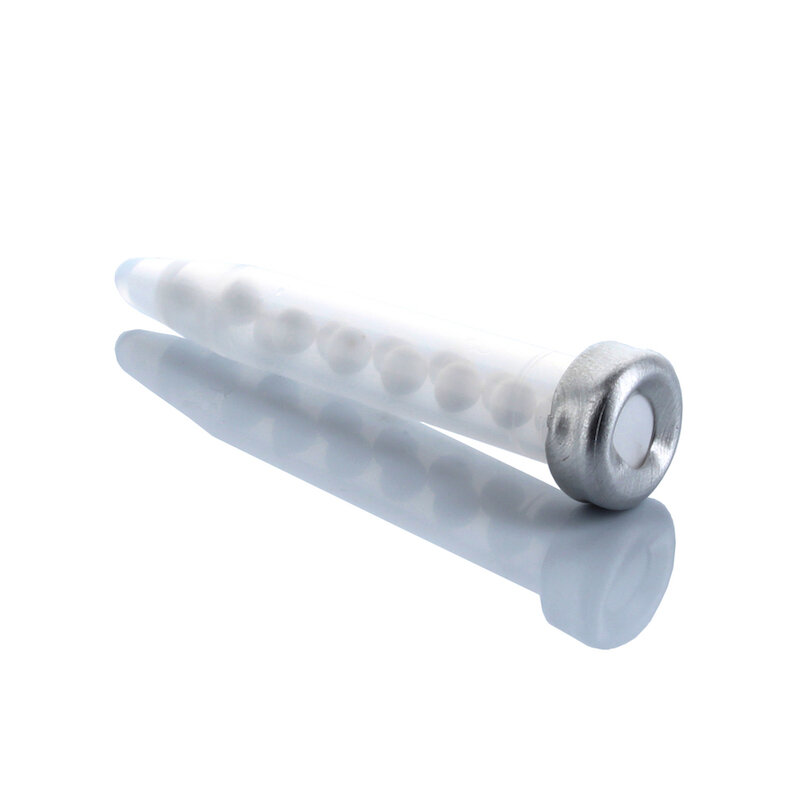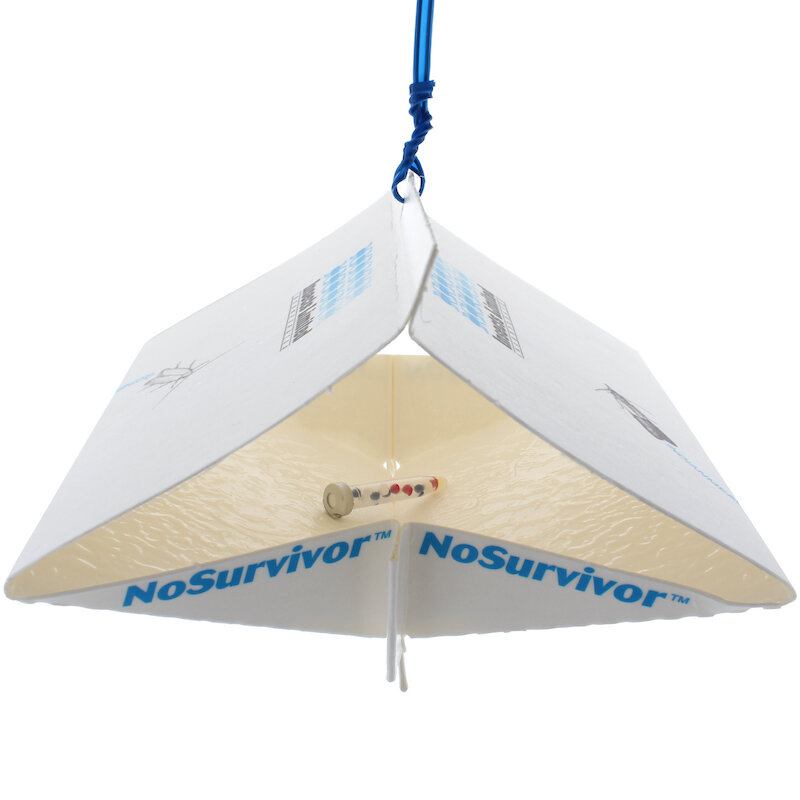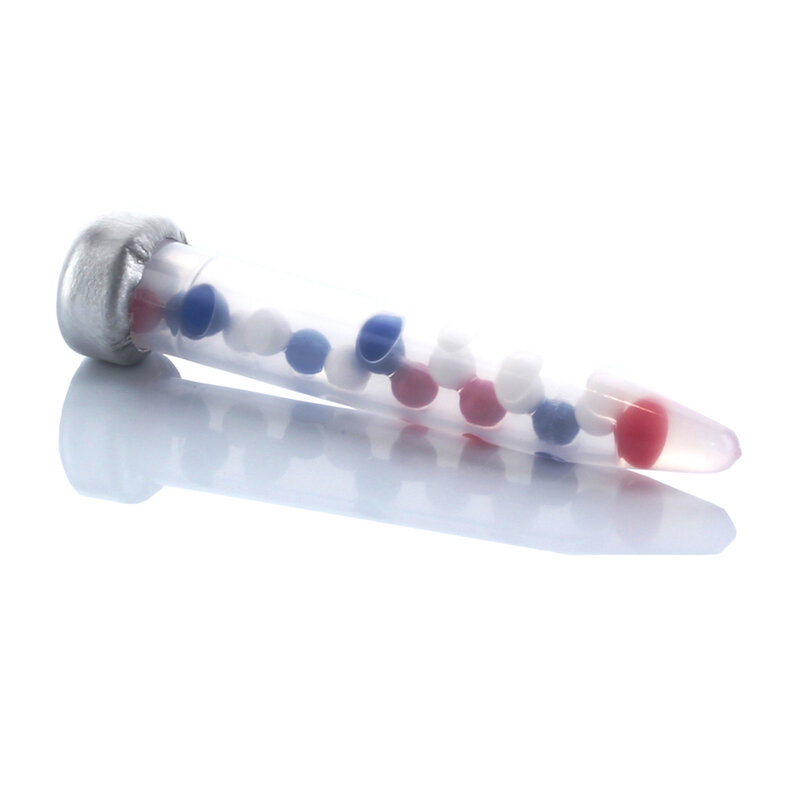Mediterranean Flour Moth (Ephestia Kuehniella)
Mediterranean Flour Moth Pheromone Traps
Mediterranean Flour Moth Description
Adult Mediterranean Flour Moths: Up to 20 mm (0.75 inches) long with forewings are pale gray with transverse black wavy bars and the hind wings are dirty white in color.
Eggs: Oval, ivory in color and 2 mm (0.08 inches) long.
Larvae: Larvae are 13-16 mm (0.5-0.7 inches) long. Mediterranean Flour Moth coloration ranges from white to pink. The heads are dark and hard.
Pupae: The pupa form a brown, spindle shaped cocoon approximately 9 mm (0.35 inches) long.
Mediterranean Flour Moth Life Cycle
Adult Mediterranean Flour Moths do not feed and die within 10 days. Female moths can lay from 116-678 eggs on or near the food source that they will infest. Developmental time for the Mediterranean flour moth from egg to adult in room temperature is approximately 50 days. Mating and egg laying begins almost immediately after adults emerge from the pupa (cocoon).
Damage & Detection
Mediterranean flour moth larvae will feed on grains, seeds, tree nuts, cereals, dried fruits, powdered milk, bird seed, dried pet foods and numerous other dry food goods. The larvae prefer broken grains to whole grains. It prefers coarser grades of flour as well as graham flour and corn meal.
The larvae will migrate away from the food source to pupate and can be found considerable distances from their food. Mediterranean flour moth larvae are known for producing copious amounts of webbing that can clog animal feed dispensers and packaging machinery in food processing plants and flour mills.
Fun Facts
Sometimes confused with the Indian meal moth (Plodia interpunctella) and Almond moth (Cadra cautella)
Like many food moth species, adult Mediterranean flour moths do not eat. Their larvae are vivacious feeders and damage dried goods.
Mediterranean flour moths initiate flight at temperatures above 12.5°C (55°F).
Larvae produce large amounts of silk which can contaminate grain and clog machinery.
The pheromone that attracts Mediterranean flour moths (Ephestia kuehniella) also attracts many other moth species including:
Indian meal moth (Plodia interpunctella), Almond moth (Cadra cautella), Raisin moths (Cadra figulilella), Tobacco moths (Ephestia elutella), Cactus moth (Cactoblastis cactorum), Olive pyralid moth (Euzophera pinguis), Cedar shoot borer (Hypsipyla grandella), Mahogany shoot borer (Hypsipyla robusta), Black armyworm (Spodoptera cosmioides), Lawn grass armyworm (Spodoptera depravata), Larger cotton cutworm (Spodoptera dolichos), Southern armyworm (Spodoptera eridania), African armyworm (Spodoptera exempta), Beet armyworm (Spodoptera exigua), Fall army worm (Spodoptera frugiperda), Lateral lined armyworm (Spodoptera latifascia), Egyptian cotton leafworm (Spodoptera littoralis), Tobacco cutworm (Spodoptera litura), Costa Rican armyworm (Spodoptera sunia), Bristly cutworm (Lacinipolia renigera)
Monitoring Tips & Tricks
Mediterranean Flour Moth Monitoring Guidelines
Lure
BULLET LURE® - Contains sex pheromone to attract male moths.
Lure Storage
Keep unopened lures in cool storage less than 16°C (60°F) or place in the freezer for extended storage. Lures can remain frozen for up to 24 months or at room temperature for 12 months to retain their full effectiveness for use afterwards.
Trap Designs Used with Lure
NOSURVIVOR traps are diamond shaped sticky traps that can be hung from many locations. This design is the preferred trap for this moth that flies well.
THE SIGHTTRAP™ is the size of a NoSurvivor hanging trap and provides daily images and catch data to help with early detection. The data is available on the web and app-based software, ForesightIPM.
Mediterranean Flour Moth Pheromone Traps
Trap Placement & Use
Trap Placement Techniques
Pheromone traps can be placed year-round but are especially recommended when temperatures exceed 12.5°C (55°F). Place hanging pheromone traps 1.5 meters (5 feet) above ground or at eye level to allow for easy inspection when monitoring traps.
Place pheromone traps 7.5 – 15 meters (25 – 50 feet) apart to determine the presence or absence of Mediterranean flour moths. Increase pheromone trap density to 4.5 – 7.5 meters (15 – 25 feet) apart to help locate the source of Mediterranean flour moths.
Mediterranean flour moth pheromone traps are best utilized in areas that store dried goods such as food, grains, seeds, nuts, dried fruit, animal feed, or pet food. Keep pheromone traps 7.5 meters (25 feet) away from exterior doors.
Trap and Lure Maintenance
Replace traps when glue is filled with moths or becomes dusty. Replace pheromone lures every 90 days. Replace all pheromone lures in a location at the same time. Do not cut the cap off the bullet lure. Do not stagger lure replacement over several weeks. Record date and number of catches to identify trending information.
Pest FAQs
What is the Mediterranean flour moth life cycle?
Adult moths do not feed and die within 10 days. Female moths can lay from 116-678 eggs on or near the food source that they will infest. Developmental time for the Mediterranean flour moth from egg to adult in room temperature is approximately 50 days.
Mating and egg laying begins almost immediately after adults emerge from the pupa (cocoon).
What do Mediterranean flour moths look like?
Adults Mediterranean flour moths are up to 20 mm (0.75 inches) long with forewings that are are pale gray with transverse black wavy bars and the hind wings are dirty white in color.
Eggs are oval in shape, ivory in color and 2 mm (0.08 inches) long. Larvae are 13-16 mm (0.5-0.7 inches) long. Coloration ranges from white to pink. The heads are dark and hard. The pupa form a brown, spindle shaped cocoon approximately 9 mm (0.35 inches) long.
How to get rid of Mediterranean flour moths?
The use of pheromone traps, otherwise called pantry moth traps, can indicate the presence of Mediterranean flour moths as well as where the moths are coming from.
A visual inspection of dried food in the vicinity of the pheromone traps containing the most moths can reveal specific items containing larvae, pupae and adult moths.
Once infested materials have been identified, they should be sealed up and discarded into an outdoor trash receptacle or the materials should be sealed in plastic and frozen for a one week period to kill all stages of the moths.
Join Our Informed Community
Receive the latest industry updates as soon as they are published.






